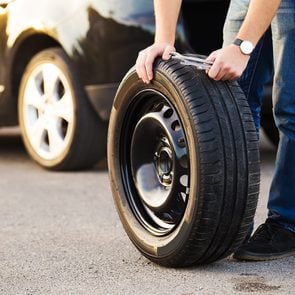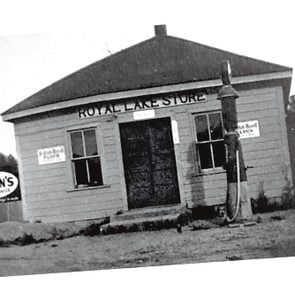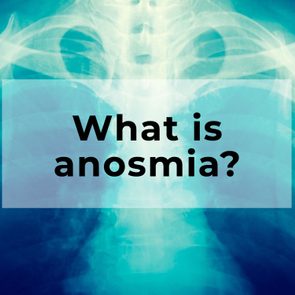If you’ve owned or driven a car, you could undoubtedly give a basic explanation of what and where the bumpers are. But you might not realize there’s more to a car bumper than meets the eye. For a deeper understanding of how car bumpers work and how to repair or replace them, keep reading.
What is a Car Bumper?
Car bumpers feature protruding shrouds of plastic or metal, called bumper covers, that surround energy-absorbing materials. They are designed to absorb impact to the front and rear of vehicles and minimize low-speed collision damage.
Today, standard passenger vehicle bumpers have a rigid reinforcing bar under the outer cover, with sections of compressible foam or plastic underneath. In North America, passenger car bumpers must absorb an eight kph (five mph) impact from another vehicle with no damage to the car body. The foam or plastic make this possible. At impact, that material squishes down between the reinforcing bar and the vehicle’s body.
Bumper History and Evolution
From their first appearances as decorations on the earliest vehicles in the late 1800s, car bumpers have come a long way, thanks to advancements in technology and safety-focused vehicle production. Although today’s bumpers are highly effective, bumper protection has decreased since the 1980s.
Bumpers used to contain more impact-absorbing material, but vehicle manufacturers lobbied for lighter weight designs to improve fuel efficiency. Style was also a factor. Many bumpers protruded beyond all other parts of the car, which some considered a clumsy look.
Today’s vehicles aren’t required by law to have protruding bumpers, but they are much safer.
Types of Bumpers
Though regulations specify bumper height and impact resistance, not all car bumpers are the same. Not by a long shot! Here are the basic types.
- Standard Bumper: Common on passenger vehicles. It has no steps or hitches, just a paint-matched plastic cover containing energy absorbing mechanisms.
- Step Bumper: SUVs, trucks and some cars have bumpers with a step-shaped cutout in the center, just below the license plate. These bumpers often have holes for installation of ball hitches.
- Cowboy Bumper: These tall, heavy-duty bumpers usually have chrome plating and are most often seen on older trucks. They’re made to be noticed and tow heavy trailers.
- Tube Bumper: Typically installed on jeeps and lifted trucks, tube bumpers forgo the plastic-shroud. Instead, they rely on a frame of heavy-duty steel tubing to lessen collision damage.
Repairing and Replacing Bumpers
If you’re involved in a collision that damages the inner structure of your bumper, get it replaced by a professional. Full bumper replacements aren’t cheap. but without the full capacity for energy absorption, you’re vulnerable to much greater damage and injury the next time your vehicle hits something.
If it’s only your bumper cover that’s damaged, there are a few DIY options. You can repair your bumper cover’s paint if it’s just scratched; patch and repaint it if it’s a small puncture; or install a replacement cover if the damage is too severe to fix.
Next, check out 10 car repairs you’ve probably wasted money on.
Growing up in the Yukon during the 1960s and ’70s was an isolating experience. Physical mail was limited, black-and-white television was restricted to four hours per day, long-distance phone calls were prohibitively expensive and consumer goods, such as magazines, only showed up in Whitehorse well after they were available in other major cities throughout Canada.
Due to hindered transportation, logistics and not having a 24-hour news cycle, there were fewer resources for me to form a balanced view on the rest of Canada, other than what I was taught in elementary school. For reasons that I, as a young student, didn’t probe, these seemed to centre on the East Coast. I was taught sea shanties, told about the spectacular tides of the Bay of Fundy, read stories of Ontarians raking and burning leaves in the fall (a bizarre concept in the Yukon), and heard of faraway places with exotic names such as Charlottetown or the Plains of Abraham, which somehow were important to our country.

A lifetime later, having acquired an education, raised a family and worked and played primarily in western Canada, my wife, Chris, and I decided to embark on a cross-country quest to see the Canada of my youthful imagination. Walking or biking were too slow for such a trip, and flying was too fast, so we packed our car with camping gear and headed out from our home in Calgary, determined to visit each province east of Alberta along the way. Despite being plagued by rain, broken tent poles, holed sleeping pads and mosquitoes, we completed the quest and returned to Alberta after having spent more than 30 days away from home. Safe to say we were ready to be stationary for a while.
Once is not enough
Undaunted by the travails of that month-long trip, we repeated the route several years later. This time, however, we had a new list of destinations and a plan for our children to join us in the Maritimes. We also brought new cameras, determined to capture images of puffins and icebergs, two of the many sights we had missed earlier.
During our two separate trips across our immense country, we compared the changes in geology, vegetation, wildlife, history and culture in each place we visited. I’m sure many passersby were curious about these crazy tourists who stopped to take pictures of metamorphic and igneous rocks delineating parking lots and roadsides curbs, oak trees, beached jellyfish and boring, old (by Canadian standards) buildings, all of which are a rare sight in western Canada.
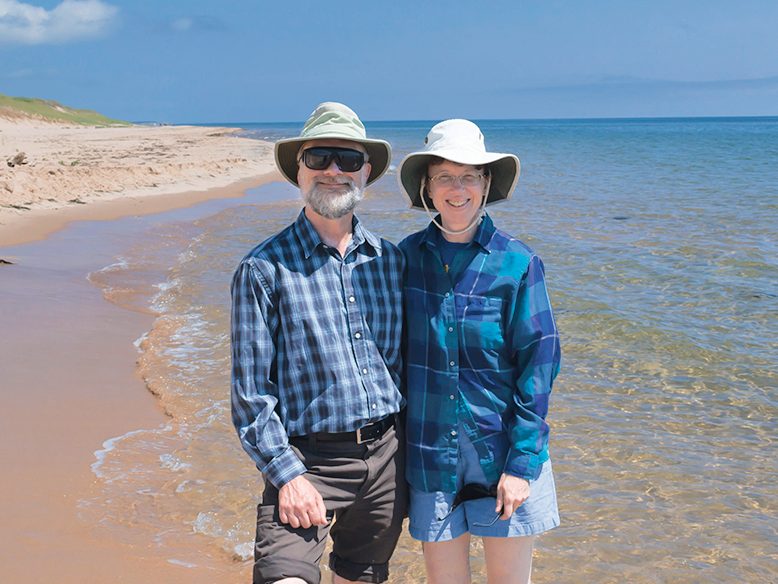
We toured Province House in Charlottetown, strolled the soggy Plains of Abraham, walked the ocean bottom in the Bay of Fundy, sang sea shanties, folk-danced, ate our fill of lobster and crab, drove the Confederation Bridge and, as a delightful bonus, encountered fireflies for the first time.
We discovered that, although large cities and industrial areas may be the meat and potatoes of the stew we call our country, its rural communities, expansive landscapes, and diverse wildlife surely provide the spice.

Oh, yes, we did fulfill our quest to photograph puffins, the aptly nicknamed “clowns of the sea,” with their awkward flight and rich colours, as well as icebergs in all their blue-green glory.
Years later, I can still remember the response of a local in Quebec when we told him we were from Alberta. “Holy God,” he said, “you’re a long way from home!”
You don’t know the half of it, sir, you don’t know the half of it!
Next, discover 10 essential experiences on the east coast of Canada.
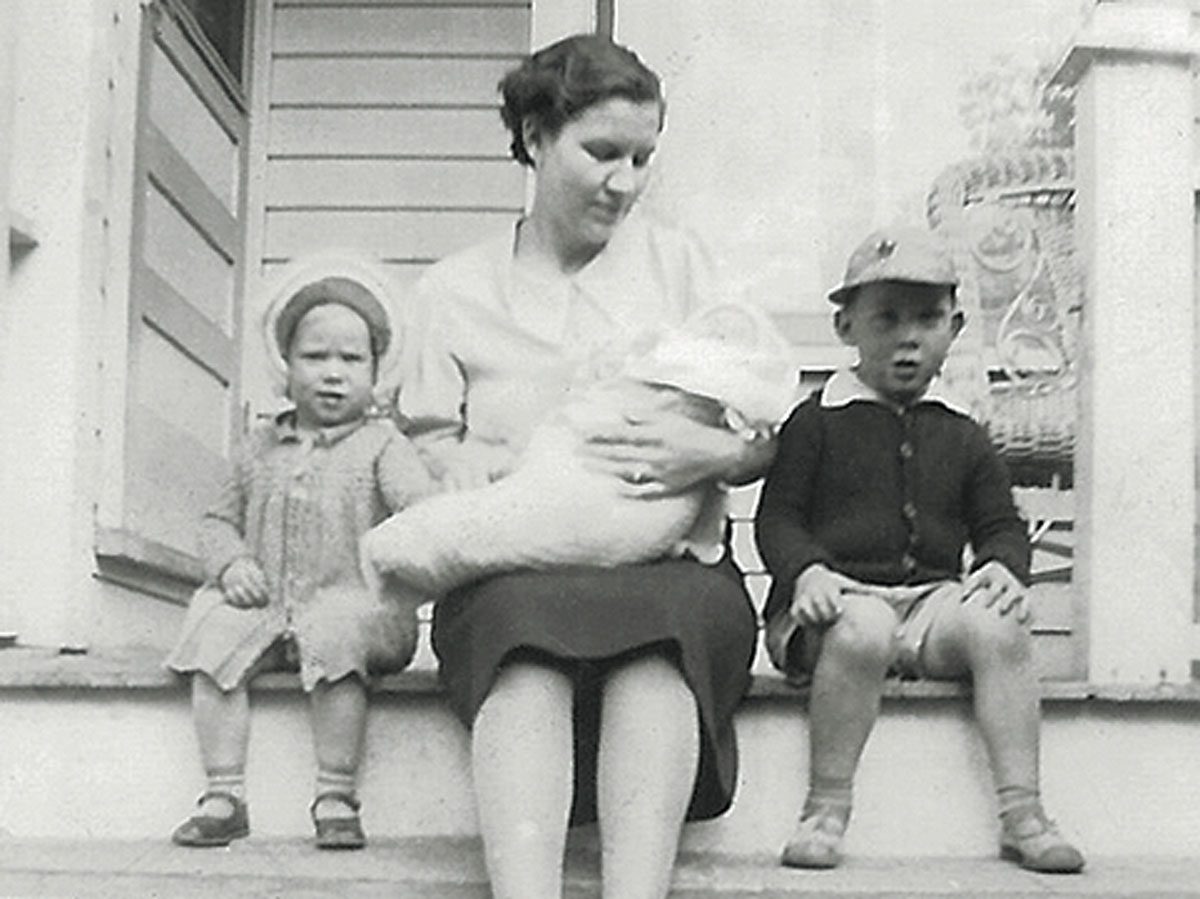
The Way It Was
I grew up in the old Norwood district of Edmonton during the 1940s and ’50s. Things were different then. Few streets were paved and there were empty lots where kids could play.
Our house was already old when Mom and Dad bought it in 1937. It was long and tall on a lot that measured 33 feet by 150 feet, with an upstairs where my Grandma Minnie lived. Dad kept the house nicely painted—always in the same colours: cream with apple-green trim. Wide wooden stairs leading up to the veranda offered a place to sit in the evening and watch the neighbours go by, while we’d have orange-peeling contests.
The tiny front yard was crowded with lilac trees and a honeysuckle bush. Around the perimeter of the yard was an overgrown caragana hedge held in place by a scalloped wire fence. I remember what a chore it was to keep that darn hedge trimmed with hand clippers! I also remember the metal gate, after putting my tongue on it one frosty winter day.
Dad was a great gardener so most of the backyard was devoted to a vegetable garden. There was a small patch of grass with a homemade swing and Mom’s flowers along the wide fence.
Inside, the rooms were small and had hardwood floors, which aren’t so special when you don’t have an electric floor polisher! The dining room had dark wood panelling and plate rails. In addition to the round oak table, chairs and sideboard, this was where Mom’s upright grand piano lived. During the war years, my my two aunts, Abbey and Elsie, brought their dates to our house and when Mom played the piano, the whole house shook to the beat of the jitterbug.
The old-fashioned kitchen was inconvenient with too few cupboards and too many doors. I remember the Beach gas stove with its tall legs and warming oven above the burners. For many years we had no refrigerator.
My sister Noreen and I shared a tiny, unheated bedroom that barely accommodated a three-quarter bed and a small, hotel-style nightstand. Our room may have been small, but it was the scene of much fun as we juggled oranges, took turns jumping off the nightstand onto the bed and came out boxing from our corners when the imaginary bell rang. I was always the character from The Red Skelton Show, Cauliflower McPugg, the punch-drunk boxer. I never could win because I was laughing so hard! It seemed we were always in trouble for causing so much noise and commotion when the adults thought we should be sleeping, but a little thing like a licking never stopped us!
Grandma Minnie was our paternal grandmother. She came to live with my parents when they first got married and lived with them for 35 years. She had two rooms upstairs in our house, a bed-sitting room and a small kitchen with a dormer window. She always seemed old to me, as she was 70 when I was born. She was very deaf, which necessitated having her radio programs, such as Back to the Bible Hour with Ernest C. Manning, turned up full blast. Since the whole neighbourhood had to endure these religious broadcasts, you would have thought they all would have converted en masse—or at least joined a church in self-defence!
As the years went by, the old neighbourhood changed. Children grew up and moved away and the people who worked so hard to pay mortgages and raise their families grew old. By the time Ken and I got married, the old Norwood district was filling up fast with new immigrants and the big, old houses resonated with the sounds of new life.
Now, decades later, in spite of all the changes that have taken place, I like to go back there once in a while. In my mind, I see all the neighbourhood kids playing “Run Sheep Run,” “Kick the Can” or “Anti-I-Over.” I can still see Dad sitting in the big chair on the porch and Mother chatting with a neighbour. Plain as day, the old streetcar lurches down the tracks on 114th Avenue and my friend, Joan Brunt, comes down the street bouncing a rubber ball. All these shadows of my childhood, so delightful to recall.
Next, take a look back at what laundry day was like in the 1930s.
You probably have a decent guess when it comes to how long you should brush your teeth for. But is it backed up by science? We spoke to Dr. Paul Luepke, Chair of Surgical Sciences, Professor, and Postdoctorate Director in Periodontics at Marquette University, School of Dentistry, for an expert opinion. “I would say two minutes, twice a day, for brushing,” Dr. Luepke said. Two minutes doesn’t sound like a lot, but it can be easy to stop early and think you’ve done a thorough job. We recommend setting a timer, playing a favourite song that is at least two minutes long, or, as Dr. Luepke pointed out, using an electric toothbrush with a built-in timer.
Do I need to floss every day?
Unfortunate news for all of us: Yes. You do need to floss your teeth every day. Dr. Ryan Dodge, a dentist practicing at Howell Comprehensive General Dentistry, told Reader’s Digest that “It is important to clean in between your teeth once a day with floss, floss picks, or a water flosser to eliminate tooth decay–causing bacteria that harbour between teeth where a toothbrush cannot reach.” A water flosser is a great option for people who hate to manually floss between every tooth. It can reach areas of your mouth that you might have difficulty getting to with your hands and a string of floss. It can also save you time! Water flossing can take only a few minutes for a well-cared-for mouth. For those who would rather go the old-fashioned route, Dr. Luepke gives this flossing-time tip: “Flossing is by tooth, so it is not that time-dependent. If [the floss] is not waxed, wait for the squeak, and then mouthwash 30 seconds.”
Is mouthwash just for bad breath?
That brings us to another good point. Mouthwash: It’s not just for bad breath anymore. A quality mouthwash or mouth rinse can help rinse and remove any plaque that brushing and flossing didn’t get rid of, and can help prevent and reduce tartar and gingivitis. Be sure to get alcohol-free mouthwash so it doesn’t dry out your mouth! (Here’s what your bad breath is trying to tell you.)
What else do I need to do for good oral hygiene?
Beyond brushing, flossing, and rinsing with a good mouthwash, there is actually more you can do for a healthy set of pearly whites. “Eat a balanced diet low on sugary drinks and snacks. And last but not least, visit your dental team twice a year for a cleaning, exam, and radiographs to ensure excellent oral hygiene and to prevent tooth decay and gum disease!” Dr. Dodge recommends.
Now that you know how long you should brush your teeth for, learn to spot the signs you need to see a dentist right away.
How to freeze food properly
Most busy home cooks love the idea of make-ahead freezer meals, but some of us are too nervous to try the genius “meal prep technique.” Are you steering clear because you’re worried about causing freezer burn, thawing food safely or having to eat a mushy freezer meal? Well, you don’t have to be concerned about any of that! We’re here to debunk the myths and give you some guidance to make freezing food super easy.
Food |
# of Months |
|---|---|
| Casseroles | 2-3 |
| Soups & Stews | 2-3 |
| Uncooked Bacon | 1 |
| Uncooked Steak | 6-12 |
| Uncooked Pork Chops | 4-6 |
| Ground Beef | 4 |
| Cooked Chicken Pieces | 4 |
| Uncooked Chicken Pieces | 9 |
| Whole chicken or Turkey | 12 |
| Cooked Fish | 4-6 |
| Cooked Shrimp | 3 |
| Ice Cream | 2 |
| Cheese, Hard or Soft | 6 |
| Butter | 6-9 |
| Frozen Veggies | 8 |
| Baked Pie | 1-2 |
| Cheesecake | 2-3 |
| Baked Quick Bread | 2-3 |
| Yeast Bread or Rolls | 3-6 |
| Baked Cookies | 8-12 |
What to know before you freeze anything
Freezing food successfully is a cinch when you follow these tricks. You’ll never have to worry about freezer burn or clumpy foods again.
- Use a thermometer to monitor your freezer. For optimum quality, it should be approximately -18 C. (Use this guide to set your freezer to the right temperature.)
- Cool food quickly and evenly before freezing.
- If you’re not sure that something will freeze well, try a small amount first. After it’s thawed and reheated, decide if the quality is up to your standards.
- Season sparingly before freezing and add more later if necessary. Spices change flavour during freezer storage.
- Keep the freezer two-thirds full for energy efficiency.
- Leave some space around each package so air can circulate.
- Manage the quantities so whatever is placed in the freezer is frozen solid within 24 hours. Adding a lot of food at once will increase freezing time.
- Store nuts, flour and juice in the door because it’s frequently opened. Save the colder parts of the freezer for other foods.
- Freeze fruits and vegetables at the peak of flavour.
- Use caution when freezing soups since you can’t freeze just any kind.
Make sure you’re thawing food safely
Want to take something out of the freezer? We have tricks for defrosting, too. There are three safe methods of thawing frozen food. Here’s the scoop.
- Refrigerator: Defrosting in the refrigerator is the safest and most fuss-free method, but it’s also the slowest, so plan ahead. Smaller items like a pound of ground beef defrost overnight. Most items take a day or two. For small beef and pork roasts, allow three to five hours per pound of meat; for larger cuts, allow five to seven hours. A whole turkey will take 24 hours for every four to five pounds of weight.
- Cold water: This type of defrosting requires less time than the refrigerator but more attention. Place food in a watertight plastic storage bag; place bag in cold water. Change water every 30 minutes until food is thawed.
- Microwave: Defrosting in the microwave is suitable for last-minute thawing of small items. Unwrap the food and place it in a microwave-safe dish. Cook the food immediately after defrosting.
Next, find out the best way to organize your fridge to keep your food safe and fresh.
Following a bout of pneumonia in 2014, 70-year-old Becky Hollingsworth experienced a persistent cough and shortness of breath. She didn’t wheeze or feel any chest tightness. Still, her doctor diagnosed her as having asthma, and prescribed two inhalers plus an oral medication. They eased her cough. She didn’t think much of the diagnosis until months later, when she received a phone call inviting her to participate in a study. As a retired nurse, Hollingsworth was an eager recruit.
The study, led by Shawn Aaron, who is a professor of medicine at the University of Ottawa and a respirologist at The Ottawa Hospital, was designed to investigate how often doctors overdiagnose asthma. Aaron had become increasingly alarmed by the number of patients who had been referred to him because their asthma medications weren’t working. When he retested such patients for the disease, he found that many did not, in fact, have asthma. He had already completed several smaller studies that suggested asthma overdiagnosis was surprisingly common. This new project was ambitious, involving 613 adults in 10 locations across the country—the largest such study to date.
Hollingsworth agreed to undergo repeated tests in Ottawa, an hour-long drive from her home near Arnprior, Ont. Aaron’s team first completed a simple, non-invasive procedure called spirometry—a test that Hollingsworth should have already undergone, but hadn’t. Wearing nose clips, patients exhale into a tube connected to a spirometer, a device that measures airflow, as fast and hard as they can for six seconds. After three blows, they inhale a bronchodilator—medication that relaxes muscles around the airways—wait 15 minutes and do three more blows. If the machine registers sufficient improvement in airflow, the diagnosis is asthma.
In Hollingsworth’s case, the bronchodilator made no difference, indicating she might not have the disease. But asthma symptoms can come and go. On a good day, a patient can do well on spirometry but still have the condition. Aaron therefore submitted all study participants who appeared asthma-free to a second test: the methacholine challenge.
Methacholine is a chemical that causes the airways to get twitchy and irritable. During the test, patients inhale increasing doses of methacholine and blow into a spirometer after each increase. A person with asthma will react badly and be hyper-responsive to low doses of the chemical.
The methacholine challenge is used when cases are difficult to diagnose. It takes up more lab time than spirometry and, because the chemical is expensive, costs more. But Aaron needed to be precise. For even greater certainty, he instructed participants who passed the methacholine challenge, thus indicating no asthma, to halve their medication over several weeks and then get retested. If the test was negative, he instructed patients to stop taking medication altogether and then test again in three weeks. Those who continued to show no signs of asthma were then assessed by a pulmonologist to determine what they actually had.
The results were stunning. About one-third of the participants—203 in total—did not have active asthma. (After 12 months of follow-up, that number declined slightly, to 181.) Sixty-one people had no symptoms at all, and almost as many only had allergies. Among the others, some suffered anxiety, while others had gastroesophageal disease (GERD). Several had serious cardiorespiratory disease, including ischemic heart disease, that had been missed. Hollingsworth had a post-viral infection cough linked to her previous pneumonia. She never did, and still does not, have asthma.
Aaron’s conclusions, published in the Journal of the American Medical Association in 2017, were consistent with earlier research in Canada, Italy, the Netherlands and Sweden. He is careful to note that asthma can go into remission and that a later discovery that it isn’t active doesn’t always signal a misdiagnosis.
At the same time, Aaron asked each study participant’s doctor to complete a questionnaire and medical-record review and provide evidence of spirometry, methacholine challenge or other objective tests employed in making the original diagnosis. Of the 530 physicians who responded, only half had requested any such tests. The other half had made the diagnosis subjectively, simply on the basis of what they observed in an office examination—suggesting a more systemic, and disturbing, problem.
It would be unthinkable to diagnose diabetes without ordering a blood test or to prescribe blood-pressure medication without wrapping a cuff around a patient’s arm to measure it. Yet many family physicians don’t order the standard test for asthma. As a result, nearly one-third of the three million adult Canadians estimated to have asthma may not have the disease after all.

Why Overdiagnosis is a Problem
Getting it wrong is not a trivial matter. Being labelled with a chronic illness can have psychological effects and hold people back from physical activity. Drugs have side effects, inhalers included. Typically, people with asthma use a corticosteroid inhaler daily and an emergency bronchodilator—such as the familiar blue puffer, Ventolin—if they have an attack. Prolonged use of steroids is associated with osteoporosis, earlier cataract formation, glaucoma, easy bruising and skin thinning. And it can be tragic when misdiagnosis means a serious disease goes undetected.
Specialists have long argued that family physicians should not diagnose asthma without first ordering spirometry. Some general practitioners will administer the test in their own offices, but many find it impractical because, for one, the fees involved aren’t enough to cover the effort. In Ontario, the provincial health plan pays physicians about $24 to perform spirometry; British Columbia pays roughly $28; Saskatchewan, about $50. Some provinces, including Quebec, pay no fee at all.
Meanwhile, a high-quality, well-interpreted test takes time and expertise. Patients need coaching to do the test properly; the procedure can take half an hour. The machine spits out results, but they are meaningless if the physician is not experienced in decoding them. Clare Ramsey is an associate professor of respirology and critical care at the University of Manitoba. When she gets a referral, the first thing she does is make sure the patient actually has asthma. She sees some who’ve never had spirometry; others have had spirometry that “in no way looks like asthma” but led to a misdiagnosis because of poor interpretation.
The better option for GPs is to send patients to specialty lung-function labs, where spirometry is routine. But there are waiting lists. Those labs are usually in hospitals, where appointments aren’t easy to get. At Winnipeg’s Health Sciences Centre, for example, it can take six months to get a test.
Wait times can be an issue across the country. When a patient has trouble breathing and it looks like asthma, it’s expedient to offer medication and say, “Let’s try this and see if it helps.” Yet medication may improve breathing even if the patient doesn’t have asthma, so if a doctor doesn’t follow up with spirometry to confirm, the patient could be one of the thousands who end up living with the wrong diagnosis—and unnecessary suffering.
Access to Spirometry is Key
Rhonda Gould knows the frustration, and the harm, of waiting for a reliable diagnosis. She is a 58-year-old dental-administrative assistant living in North Vancouver who developed a lung infection in the spring of 2020, just as COVID-19 erupted. Her COVID-19 test was negative, and her infection was treated, but she was left with a rattling sound in her chest. By August, she was having difficulty breathing. A spirometry test did not indicate asthma, but her respirologist suggested she try inhalers, hoping they would provide some relief. She needed a methacholine challenge test to be certain about the asthma, but due to the pandemic, pulmonary-function labs were severely restricted in what they could do. She would have to wait—for months.
The breathing attacks continued through the summer, and in September, Gould’s family doctor, suspecting that her condition was triggered by fumes from the aggressive use of disinfectant wipes in the clinic where she worked, recommended she transfer to office duties. Her breathing improved, but on November 18, she was needed back in the clinic. By the end of the day, she could not get a breath and was panicking. “It was the scariest thing of my life,” she recalls. “I felt like I was choking.”
That evening, she made a desperate call to her respirologist, who helped calm her as she took puffs from her steroid inhaler. He told her to stay away from the wipes. Then he sent a referral to Chris Carlsten, head of respiratory medicine and director of the occupational lung-disease clinic at the University of British Columbia.
Carlsten was able to expedite the testing Gould needed. Finally, the following January, she had a second spirometry test, followed about two weeks later by a methacholine challenge, which confirmed the absence of asthma. Her respirologist also did a scope of her lungs and noted that her vocal cords were erratic and twitchy.
After reviewing the complete file, Carlsten concluded that she likely had an irritable larynx syndrome that could explain her reaction to the sanitation wipes. He recommended speech therapy to strengthen the muscles around her vocal cords. Gould was off work through that winter. When she returned in April, she was assigned to administrative duty, distanced from the clinic. “I had good care,” says Gould, resigned to the circumstances of the pandemic. But getting the proper diagnosis was a year-long ordeal—one that she hopes is a lesson for doctors when it comes to prompt and appropriate testing before diagnosing asthma.
Vancouver is one model for better access to spirometry. Over a decade ago, 17 hospitals agreed to use the same referral form, making it easier for patients to book appointments and choose the lung-function lab most convenient for them. Also, a special clinic attached to Vancouver General Hospital eliminates wait times for spirometry by providing walk-in tests to anyone with a doctor’s requisition. In 2019, the clinic reportedly saw 4,000 walk-ins. Still, access to spirometry remains a huge problem elsewhere in the province—and the country.
“We know that the need for spirometry is massive compared to what’s actually being done,” says Carlsten, who is also the director of Legacy for Airway Health, a new organization dedicated to the prevention and care of asthma and chronic obstructive pulmonary disease (COPD). He has tried for many years to educate family physicians about the importance of objective tests for asthma and agrees with Shawn Aaron that getting a spirometry test should be as easy as getting an X-ray for a broken bone. But it will take a cultural shift. Spirometry is, quite simply, undervalued. While Carlsten firmly believes that, if more labs offer spirometry, more family doctors will request it, he also thinks efforts may be better directed at educating the public so that patients know to demand the test.
The Risk of Underdiagnosis
Jazzminn Hein, for one, wishes she had known to ask for spirometry. She’d never heard of the procedure and didn’t know she actually had asthma. Her case presents a different consequence resulting from the lack of spirometry testing: underdiagnosis. Hein was always finding herself out of breath. She told herself it was because she was out of shape—and smoking didn’t help. She was only 24 but had started in her teenage years because “smoking was cool.”
Then she became pregnant, and the morning sickness was so severe she could barely eat, let alone tolerate a cigarette, and she quit. Her breathing didn’t improve. Her job in customer service for a telecommunications company required her to be on the phone a lot; by the end of a conversation, she’d be gasping. It was her previous anxiety diagnosis, her family doctor determined.
Then, one fall day in 2020, she and her mother-in-law packed her infant daughter into her stroller for a walk along the creek near her home in Maple Leaf, Ont. It was a jeans and T-shirt kind of day. As they went up a slight incline on the trail, she felt herself getting winded; when she reached the top, she was doubled over, with her chest burning and her lungs on fire. While she struggled for breath, her mother-in-law, a woman who’d smoked for 30-plus years, was doing just fine. Hein knew something was wrong. Another day not long after, she was so frightened by chest pain that she went to the hospital. It was just a panic attack, she was told, just her anxiety.
About a month later, Hein received a call from The Ottawa Hospital asking whether she had shortness of breath, a cough or wheezing, and if she would like to be part of a new study. She agreed. This time, Aaron wanted to find out how many people have asthma or COPD but haven’t been properly diagnosed. In November, Hein visited the study centre in Ottawa for the first of two spirometries. On her second visit, she met Aaron, who diagnosed her with asthma and sent her home with a prescription for inhalers.
Her quality of life has since dramatically improved. She’s able to exercise more, sleeps better and doesn’t have shortness of breath or chest pain. Knowing the true cause of her symptoms has also helped with her anxiety; there’s no need to panic over breathing problems. Her two-year-old daughter now has a baby brother.
Aaron expects to complete his large study, which involves about 4,000 people across Canada, by the end of this year and hopes to publish results by the end of 2023. Preliminary findings, after testing 2,400 people, revealed that eight per cent of study participants had undiagnosed asthma and 12 per cent had undiagnosed COPD. It’s more evidence that with a simple, cheap test, many lives would be different.
© 2021, Renée Pellerin. From “False Positive: Why Thousands of Patients May Not Have Asthma after All,” The Walrus (July 27, 2021), thewalrus.ca
Next, find out how stem cell therapy is saving lives.

The fate of Amelia Earhart
The disappearance of Amelia Earhart continues to be one of the most talked-about missing plane mysteries in history. On July 2, 1937, the world-famous American aviator and her partner, Fred Noonan, disappeared in her Lockheed Model 10-E Electra. The pair took off from Lae, Papua New Guinea, with the goal of flying around the world—unfortunately, they lost contact somewhere over the Pacific Ocean and were declared missing the same day. Ships and aircraft from the U.S. Navy and Coast Guard later scoured more than 640,000 square kilometres of ocean, but Earhart and Noonan were nowhere to be found. Official reports conclude they ran out of fuel, crashed into the Pacific and drowned.
The vanishing squadron
What began as a routine training flight turned into one of history’s most infamous missing plane mysteries. On December 5, 1945, five TBM Avenger Torpedo bombers—collectively known as Flight 19—departed the Naval Air Station Fort Lauderdale carrying 14 airmen. During the mission, the pilots began speaking incoherently, compasses started to malfunction and an eerie buzz of static replaced radio communications. To add to the mystery, the Flight 19 bombers were flying over the Bermuda Triangle at the time of their last signal. After learning that Flight 19 was completely lost, two Martin PBM Mariner flying boats were dispatched—20 minutes into the search, one of the Mariners vanished as well. To this day, the exact cause of Flight 19’s disappearance is unknown.
The mystery of the Bermuda Triangle
The Star Tiger also seems to have fallen prey to the Bermuda Triangle’s alleged curse. On January 30, 1948, the aircraft, a BSSA Avro Tudor IV travelling from the Azores to Bermuda, vanished while flying over the Atlantic Ocean. Twenty-five passengers and six crew members were on board. The last communication between the Star Tiger and Bermuda’s airport tower was recorded at 3 a.m.—later calls to the Star Tiger went unanswered. The U.S. Air Force commissioned 26 aircrafts for a five-day rescue mission, but the search was in vain.
A pilot’s enigmatic final word
On August 2, 1947, a BSSA Avro Lancastrian airliner—Star Dust—carrying 11 passengers and crew was on its way to Santiago, Chile, from Buenos Aires. A routine Morse code message went out at 5:41 p.m., signalling the aircraft’s expected arrival in Santiago. Later, however, the airport received a message that matched no known Morse code abbreviations: S-T-E-N-D-E-C. It was the last communication received from the Star Dust, which never reached its destination. A massive search for the wreckage and possible survivors proved fruitless. Fifty-three years later, climbers on Mount Tupungato in Argentina discovered the remains of a Rolls Royce engine, fuselage and strips of bleached clothing. This sparked an expedition to search the mountain, where debris and human remains were finally found. The mysterious meaning behind S-T-E-N-D-E-C has never been solved.
A mid-flight explosion?
On March 16, 1962, a Lockheed L1049H Super Constellation prop liner carrying 93 U.S. soldiers, 11 crew members and three South Vietnamese passengers disappeared into thin air. The flight, which was heading to Ho Chi Minh City from California, stopped to refuel in Guam—but disappeared 80 minutes after takeoff. The aftermath? One of the largest air and sea searches in the history of the Pacific, covering 220,000 square kilometres over eight days. Unfortunately, neither the aircraft nor any bodies were found or recovered. There’s some speculation that the aircraft may have exploded mid-flight since a bright light was seen in the sky after its last radio contact, but this has never been confirmed.

The costliest search in aviation history
One of the most famous missing plane mysteries is Malaysia Airlines Flight 370. On March 8, 2014, the plane, en route to Beijing from Kuala Lumpur with 227 passengers and 12 crew members on board, disappeared an hour after takeoff. Search efforts began in the South China Sea, with 34 ships and 28 aircraft from seven countries participating. Analysis of radar and satellite data revealed that after its final message around 1:00 a.m., the plane veered dramatically off-course before cruising on autopilot for hours. It’s now believed that the plane flew until it ran out of fuel and plunged into the Indian Ocean—far from initial search efforts. Two years after the disappearance, debris from the aircraft was discovered off the coast of South Africa and Mauritius, but conspiracy theories abound.
The disappearing Douglas DC-4
On July 21, 1951, a Canadian Pacific Air Lines Douglas DC-4 took off from Vancouver to Tokyo with 37 people on board, including Army and Air Force personnel. On the way to a stopover in Anchorage, Alaska, however, the plane faced heavy rain and icy conditions, causing it to veer from its flight path. A rescue operation was launched several hours later when the Douglas DC-4 failed to arrive. After a three-month search by both Canadian and American aircrafts, the search was called off on October 31, 1951. To this day, no trace of the aircraft has been found.
Next, find out more about Canada’s most notorious cold cases.
